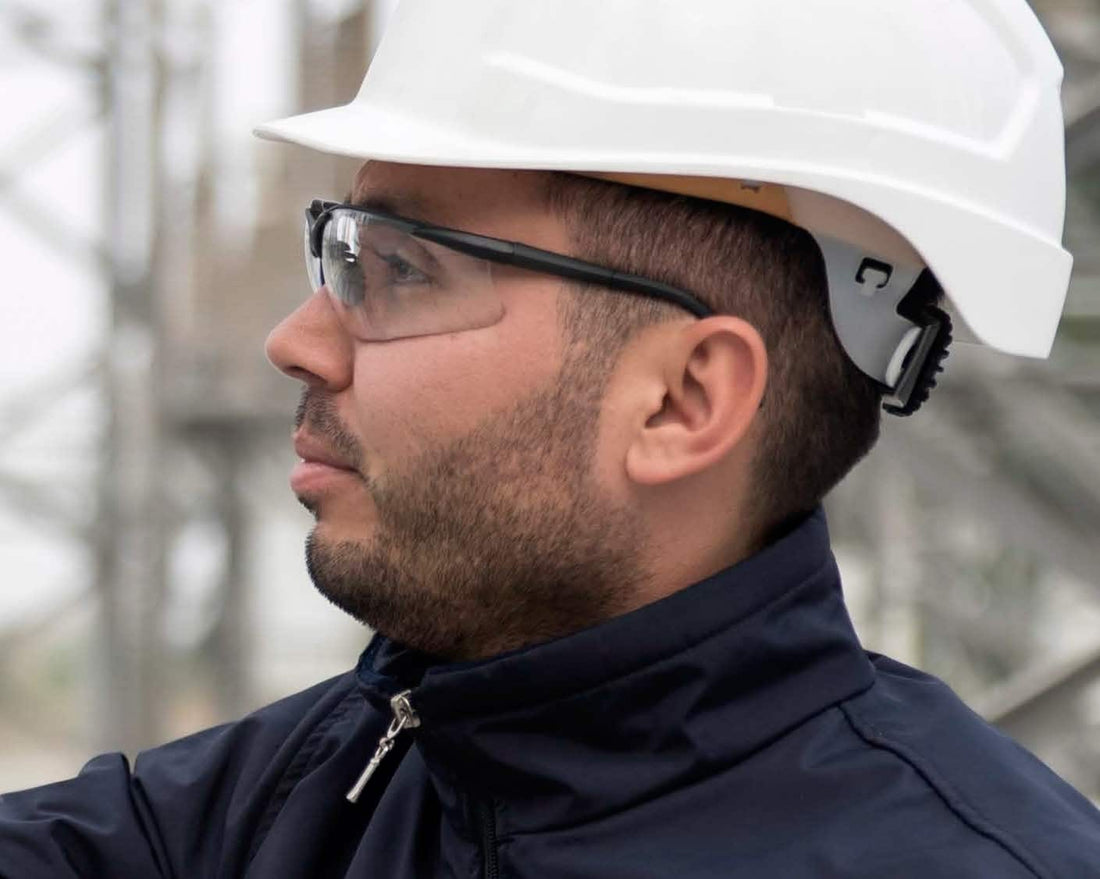Any glasses that are deemed to be safety glasses must be able to withstand specific measures to be classed as such.
Hazards for employees can vary greatly across industry and job type and many jobs often present a combination of hazards at one site. Each pair of safety glasses must be approved via individual testing procedures to gauge its protection level.
Possible hazards at the workplace may include:
- Mechanical hazards due to debris and moving parts
- Biological and chemical substances
- Optical radiation such as UV or IR radiation
- Laser beams
- Electrical hazards
The test of the mechanical strength is classified into protection class S or F.
Frames and lenses are tested and certified separately. On the previous page you will find an overview of the EN 166 classifications.
Some other certifications such as CE Marks also provide rigorous testing to ensure standards are adhered to. You should consider when purchasing safety glasses whether you require a CE mark on your glasses.
Additional Tests that may be carried out
Flammability
For this test the safety glasses must withstand a steel rod which is heated to +650 degrees. The rod is then placed on the glasses or lens for 5 seconds and is considered viable if it does not ignite or glow.
Resistance to increased temperature / aging
The glasses are placed in a furnace or heating cabinet at temperatures in excess of 55 degrees for 60 minutes. At the end of this period they are inspected for deformation, aging and optical changes.
Corrosion Resistance
For this test to be successful the glasses or goggles must withstand placement into boiling sodium chloride solution for at least 15 minutes.
The frame is then removed and placed into sodium chloride at room temperature for an additional 15 minutes before being removed, rinsed and inspected.
If all surfaces of the metal parts are corrosion free, the frame will have been deemed to have passed.
Resistance to aging by UV Exposure
The lens to be inspected is exposed to 50 hours of strong radiation from a UV lamp. This will provide reassurance that the frames and lenses can withstand UV exposure in simulated sunlight for 2 years. The inspector will be measuring whether transmission and stray light meet the specific requirements.
Field of Vision
All glasses and goggles must have a sufficient field of vision for the wearer. This test is carried out via a laser in a fixed head position which simulates fixed viewing directions. The glasses or goggles will only be deemed certified if the minimum field of vision is observed.
Side Protection / Side Shields
This test is similar to the field of vision test and ensures that the field of vision is not obstructed by any side protection that is included on the frames. It also requests that the side shields are fit for purpose and restrict foreign objects from going into the eye or frame from the side.
Additional Test Procedures
Resistance to damage from small particles.
In this test a sand trickle test in used, where 3kg of natural quartz sand is sieved onto the lens. The lens is then checked using the Scattered Light test to ensure its clarity after exposure to small particles.

